Let There Be Light: The Evolution of the LED
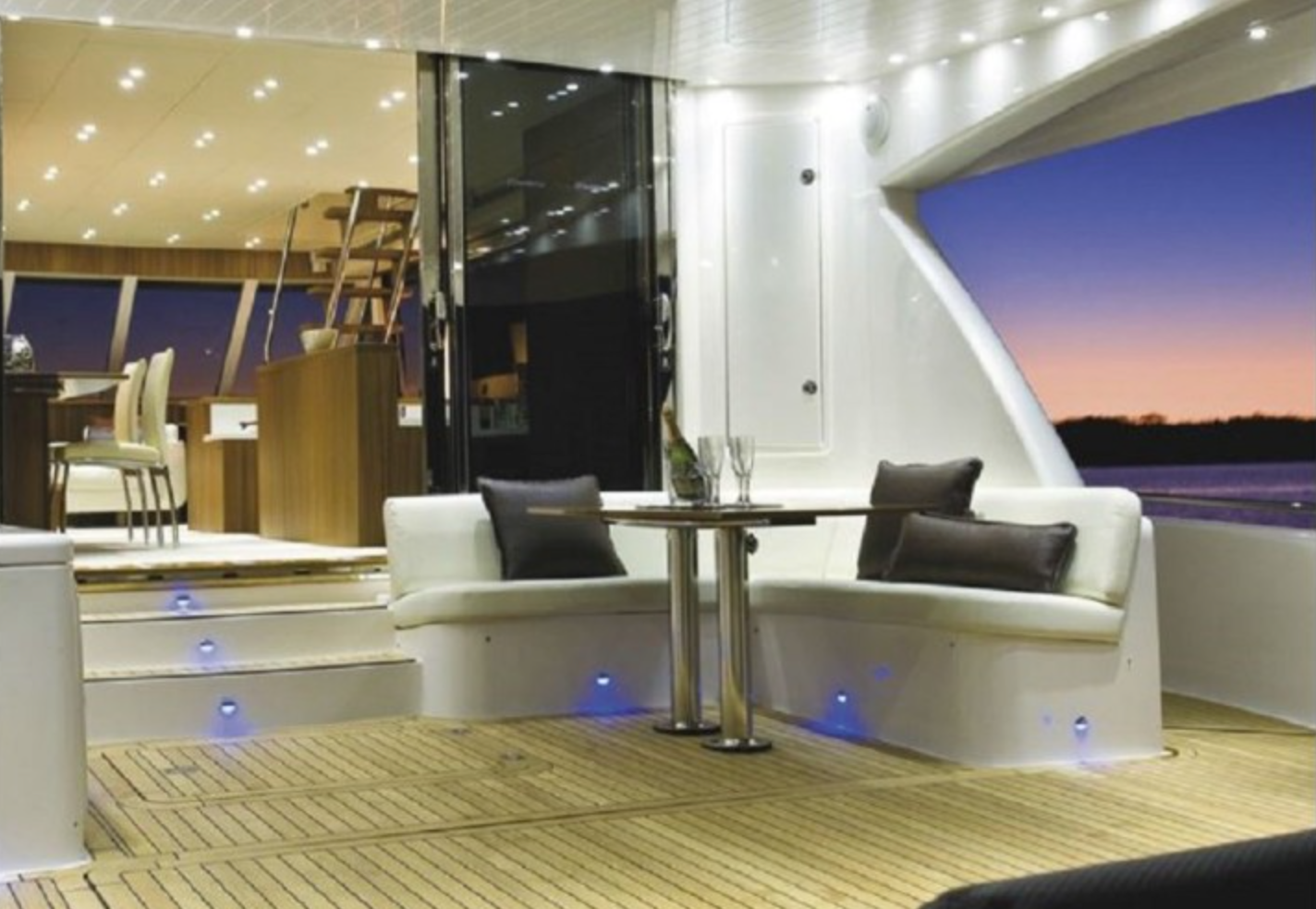
A solid-state source, LED is often more compact, energy efficient and more durable than any lighting technology that has gone before. Already proven by leading marine lighting manufacturers as an effective technology for navigation lamps, courtesy lighting, underwater or general utility illumination, the next technology shift for marine applications is based around white light devices.
The past few years have seen significant quantum leaps in the luminous intensity of LEDs per watt. The most efficient marine lamps on the market today now offer efficiencies in the range of 100 lumens per watt, and can effectively illuminate a vessels interior.
This article provides an introduction into the main topics of LED illumination for general marine interior and exterior applications. Like so many modern marine electronic systems, lighting too has developed significantly with increases in technology. Light sources have shifted from a filament within a housing into sophisticated opto-electronic devices providing increased benefits to boat manufacturers and owners.
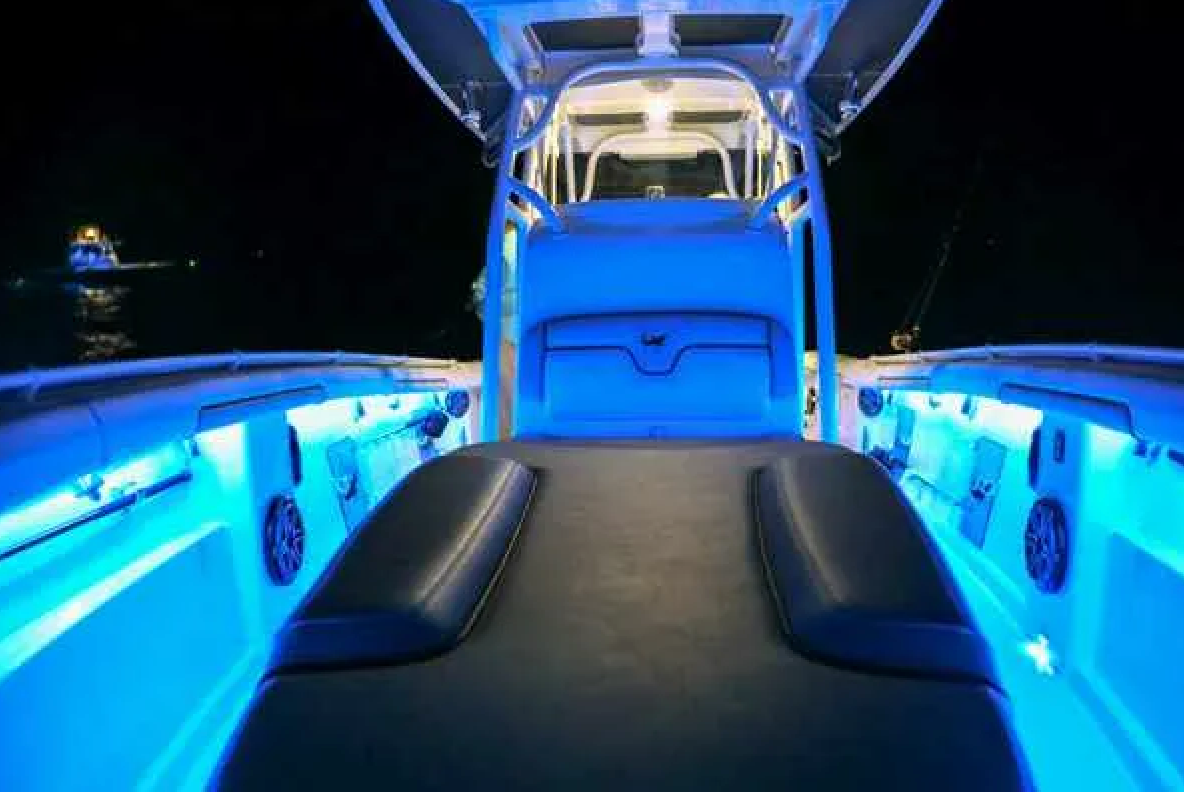
History
LEDs are semiconductor devices that convert electricity into light. LED lighting started with extensive research in the early 60’s. Texas Instruments, General Electric, & RCA Laboratories were researching and developing the technology. They discovered that miniature crystals (gallium arsenide) gave off infrared radiation when electric current was applied. That was and became the first (infrared) Light Emitting Diode. Then came the first visible spectrum (Red) Light Emitting Diode.
Light Emitting material had been around since the early 1900’s but not properly researched. Different forms of Gallium as well as other crystals determine the colour of the LED. Blue LEDs were invented in 1971. White, green, blue, UV, yellow, amber, and yellow LEDs entered commercial production in the early 90’s.
Red LEDs have been used in scientific and indicator devices since the early 70’s. Initially, white LEDs were only possible by “rainbow” groups of three LEDs, red, green, and blue, by controlling the current to each to yield an overall white light. This changed in 1993 when Japan’s Nichia Corporation created a blue indium gallium chip with a phosphor coating that is used to create the wave shift necessary to emit white light from a single diode.
Benefits
Quality LED lighting provides many significant advantages over traditional lighting products. Significantly reduced power consumption, increased reliability, reduction in radiated heat and attractive ambient effects are all benefits of modern LED lighting systems.
Power Saving On Board
Without doubt, the single most influential driver for LED technology on yachts and powerboats is the considerable power saving on offer compared to incandescent lamps. Lighting systems are a major part of a vessels electrical architecture where consumption can be dramatically reduced. The potential to save hundreds of amp hours is real and available now, and has been proven worldwide by leading marine lighting manufacturers.
As a recent example, the entire Hella marine LED downlighting system specified for a Riviera 43ft flybridge sportfisher draws less than 2 Amps. To illuminate the same interior layout with halogen lamps would have totalled over 18 Amps. The reduction in cable size and weight together with the safety aspects of an almost zero heat signature was also highly beneficial. The majority of the lamps specified for the Riviera 43 system are the Rakino and EuroLED 95 series warm white LED downlights. Each lamp consumes less than 0.8W and 4W respectively yet produced of equivalent light output of a 10W and 20W halogen lamp.
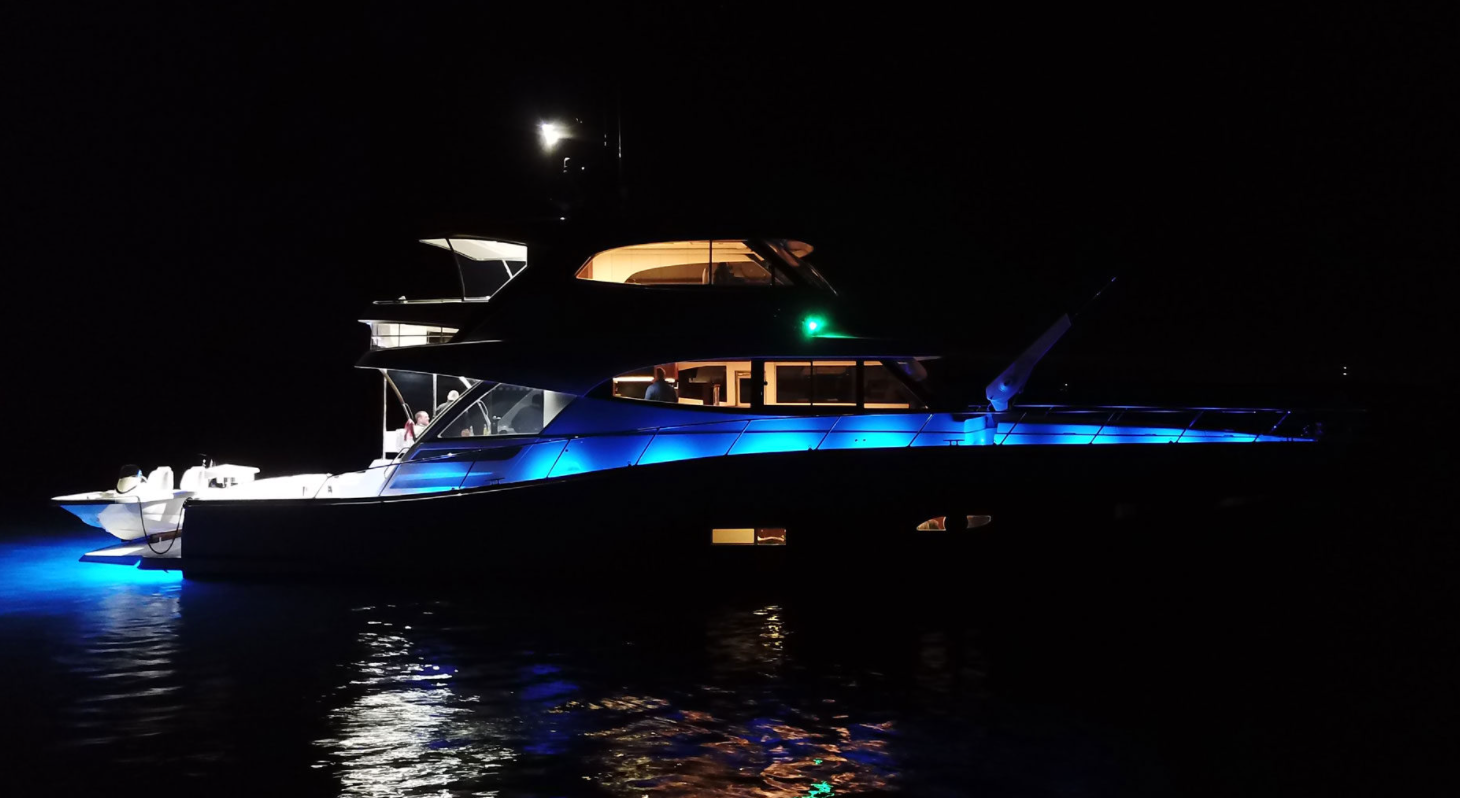
However it is important to remember that larger motor yachts require large house banks of batteries. e.g a 65’ (20 m) motoryacht has around 400 amp hour of batteries. If you had twenty, 20w halogens on, they would draw 16 amps for maybe 2 hours over dinner, before most of the lighting is reduced for ambience.
The generator is on for the air conditioning, dishwasher, coffee machine, fridge and freezer etc and charging the batteries at 100 amps per hour, so it is not really a big issue. The equivalent lights in LED would save a ‘massive’ 60% or 6 amps, which in the scheme of power use is inconsequential, given that the stereo you have on probably draws 30 amps in that same period.
Reliability
Due to their solid-state nature, LEDs do not have filaments to break, however LEDs do require precise current regulation and voltage protection to provide long term reliability. For LED lighting manufacturers, many design and engineering milestones are required to produce durable products to provide ongoing performance in marine applications. Considerations such as completely sealed housings, sealed cable entries, effective electronic protection, shock, vibration and impact resistant components all contribute towards an LED lamps improved reliability. Compared to incandescent lighting, where a filament inside a bulb may break at any moment, quality LED lighting can be ‘fit and forget’.
Some LED light manufacturers claim operating lifetimes of 50,000 or 100,000 hours plus for their lamps, however in many cases these claims are much generalized. The high power LED devices employed in modern interior lighting products are often to new to have been thoroughly tested for such periods, this lifetime estimates are based on the LED specifications rather than the life of the complete lamp in a marine installation.
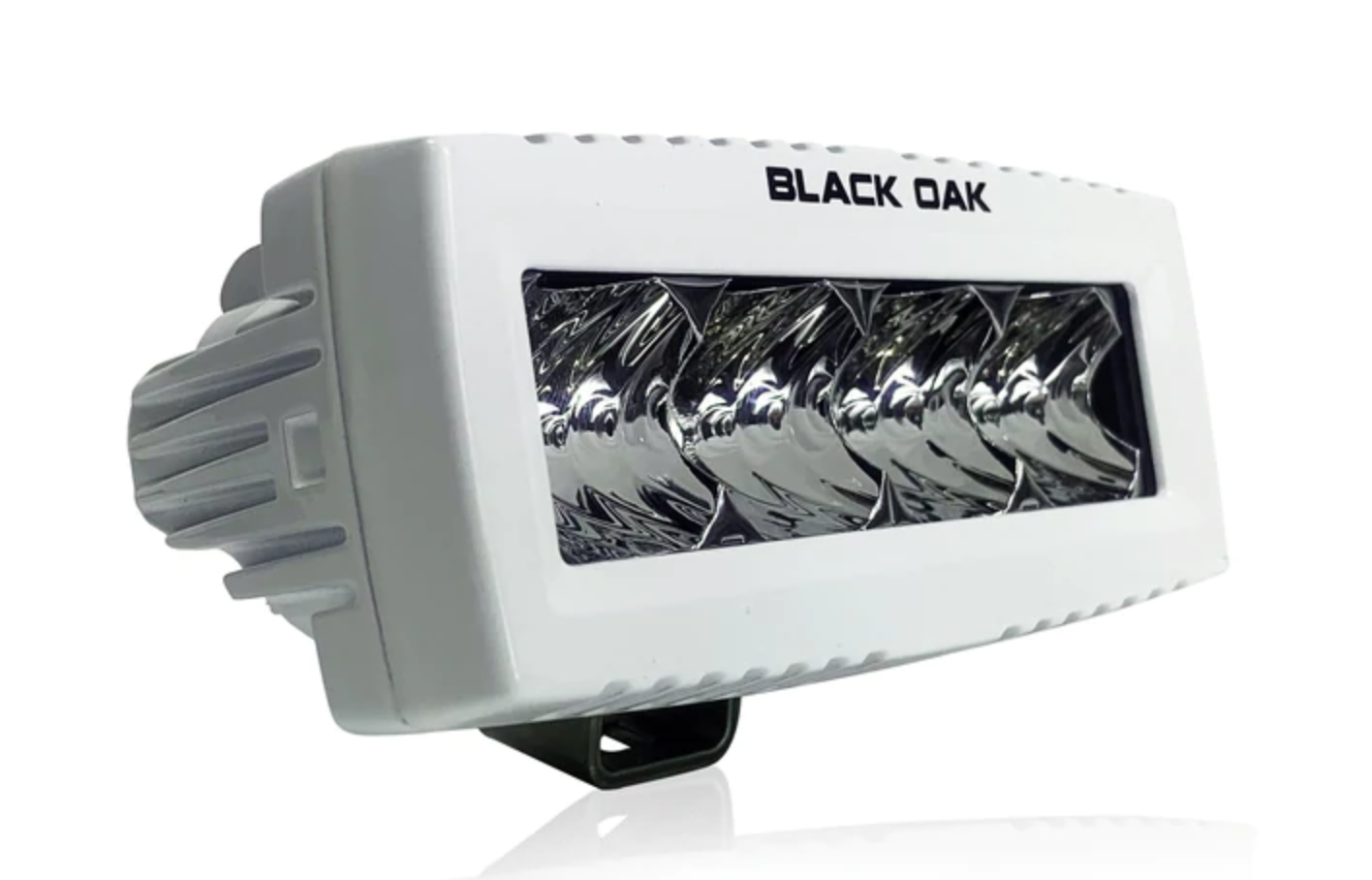
In the harsh marine environment, salt air corrosion to circuit boards, light degradation due to excessive heat, vibration, shock loads, severe voltage fluctuations and low battery voltages all contribute to reduce the operating life of LED lamps with through engineering and electronic protection.
The supplier’s warranty, integrity and track record is often a more accurate benchmark on the lifetime and quality of the LED lamp under consideration.
Heat Reduction and Thermal Management
With the power saving benefits of efficient LED based devices also comes heat reduction benefits. The sometimes dangerously high temperatures of traditional 10W and 20W halogen lamps can be eliminated with high efficiency LED technology. This allows builders and designers a wide scope of installation possibilities where the air cavity space behind incandescent lamps traditionally reserves for cooling is no longer required. Efficient LED lamps can be mounting into solid surfaces and composite structures without risk of fire or heat damage to surrounding materials.
An interesting figure from the commercial building sector quoted up to 40% of a buildings air conditioning load is used to reduce the heat generated by incandescent lighting.
A common misunderstanding is that LED’s do not generate heat. In contrast to incandescent lamps however LED’s like to ‘run cold’. Well engineered thermal management of a LED device is essential for the long-term durability of LED lamps.
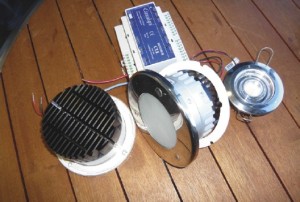
Properly designed LED interior lamps save power and reduce the heat loading in a cabin compared to incandescent lighting. High output LED’s do generate heat, which needs to be coupled to surfaces designed to efficiently transport the heat away from the LED itself. A strong 6 watt Cantalupi light for example comes with a heat dissipation attachment on the back. LEDs that overheat, meaning the junction temperature of the LED rises above a set threshold, will permanently degrade and significantly reduce their luminous efficacy.
A noticeably ‘hot to touch’ exterior surface of a high output LED interior lamp provides some indication that the light output of the device will deteriorate within a few hundred hours. Well-engineered LED devices will operate ‘cool’ or ‘slightly warm’ to the touch after many hours of operation.
Lens and Optic Technology and Eye Safety
To take advantage of the ever increasing efficacy of the most advanced LEDs, efficient optic design is essential to capture and spread 100% of the available LED light and to evenly illuminate areas on board. Unlike incandescent light sources, LED devices begin with a directional light pattern, thus the goal of the optic designers for an application such as interior down lighting is to design optics and lens patterns that produce an effective spread of illumination throughout the interior. The spread of light is more important than how intense a lamp looks when viewed on.
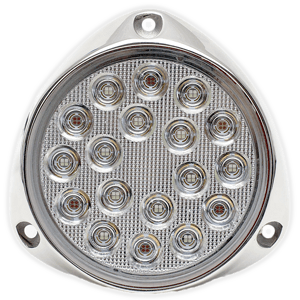
With significant advances of LED brightness, eye safety considerations are increasingly important. It is essential for high power LEDs to be coupled with efficient optic designs that protect the eye’s retina from possible damage. It is desirable for the entire lens area of a lamp to be evenly illuminated via an efficient optic rather than using a bundle of LEDs without any optic. Easily visible LEDs inside an interior lamp without any optic or lens protection will cause a degree of eye discomfort if viewed directly as LED devices are effectively laser class products.
Costs
Quality LED interior and exterior lamps have shifted marine lighting systems from traditional incandescent globes held within a housing to completely engineered opto-electronic devices. These devices now incorporate advanced circuit protection, optics, lenses and the LED source itself to produce light. As a result the features and benefits of effective LED lighting on board do carry higher costs compared to incandescent lamps however for many applications, particularly new vessels, the efficiencies and reliability gains provide high value propositions.
For general marine interior illumination, the price of high efficiency white LED devices remains a significant factor in the cost of the product. Rather than significantly reducing in cost over time, LED devices have improved in efficacy.
In the next 5 years LED devices will be available in the vicinity of 150 lumens per watt, then 200 lumens and more, providing increased value and design opportunities for marine lighting systems.
Light Output
For an effective comparison of the different products from marine LED manufacturers, many factors must be considered. The best lamp for a given application is no longer the one that solely meets a style requirement. Today, power consumption, efficiency, output and beam angle must be considered together with light colour, shape, and the aesthetics of the housing and finish itself.
To make the most informed decisions, the following performance data is worth considering:
Luminous Flux. Measured in Lumens (lm), luminous flux describes the total quantity of light produced from a lamp. The higher the lumen count, the more intense the light output.
Luminous Intensity. Measured in Candela (cd), luminous intensity is the luminous flux at a particular angle from the light source. Peak candela occurs at 0 degrees, ie directly below a lamp.
Illuminance. Measured in Lux (lx), Illuminance is equal to luminous flux divided by the illuminated area. One lux is equal to one lumen per square meter.
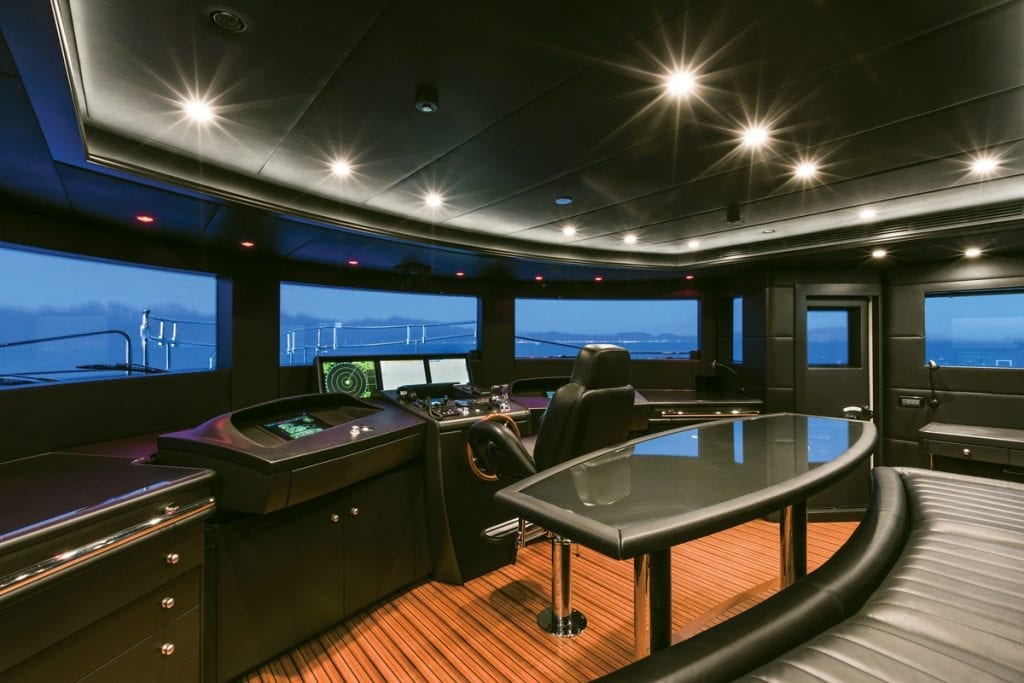
If the area to be illuminated and the desired level of illumination are known, the total number of lumens required can be calculated. Divide the total lumens by the output of the LED lamp under consideration to determine the number of fixtures required to deliver the desired light output. eg, If a powerboat has a saloon of 10 square meters and the desired illumination level is 120 Lux, a total of 1200 lumens are required. If the LED lamp under consideration has a luminous flux of 80 lumens, 15 lamps will be required (1200/80 = 15).
For further accurate comparisons it is also important to consider the beam angle of an LED lamp, and the lux levels available at varying distances from the device. Narrow light beams may provide effective intensity directly under the fitting may not evenly illuminate an interior because the light may simply be too narrow.
Efficacy. Like efficiency, the efficacy of an LED lamp is the amount of light it produces per unit of electrical power it consumes (lumens per watt). The higher the lumens per watt, the higher the efficiency. It may also be an interesting comparison to divide the luminous flux of a lamp by its cost to derive lumens per dollar. The more lumens per dollar (flux per bucks), the more light for your investment.
Also, it is important to determine that the efficacy of the LED lamp is measured as the devices total efficacy, not the efficacy of only the LED(s) employed. Power consumed to run an electronic power supply driving and controlling the LED(s) is always a contributor to the lamps total consumption.
Color Temperature and Rendering
Until recently, the lack of high quality white LED devices with sufficient intensity has been the major factor preventing the acceptance of LEDs for general marine lighting purposes. LEDs had a reputation for appearing ‘cold’ and ‘blue’ due to their phosphorous coating heritage. However today’s high efficacy devices can rival traditional incandescent light sources for color and ambience. When selecting LED interior lighting, considering both the right color temperature and a high Colour Rendering Index (CRI) is important. Color temperature (measured in Kelvin) describes the effect of heating an object until it glows incandescently, the emitted radiation, and apparent color, changes proportional to the temperature; easily envisioned when considering hot metal in a forge that glows red, then orange, and then white as the temperature increases. CRI is the calculated rendered color of an object. The higher the CRI (based upon a 0-100 scale), the more natural, sharper and crisper the colors appear. Natural outdoor light has a CRI of 100. An ideal light source for color rendering will have both a color temperature similar to daylight and a high CRI value.

Higher color temperatures (>5200K or more) are described as ‘cool’ white, and lower color temperatures (<3500 K range) ‘warm white’. Cool is suggested as more effective for visual tasks, work areas such as engine rooms, and exterior lighting. Warm white light is recommended for interior spaces because it adds life and vibrancy to people and objects, is considered more flattering to skin tones and clothing and makes certain food look more appealing. Between this range lies the ‘neutral white’ color temperatures, often providing a comfortable compromise between intensity and ambience.
These color choices should only be an approximate consideration, however. Cool white will accentuate blue and green hues in certain fabrics or surfaces or where there are plenty of stainless steel or gel coat surfaces. Lighting designers may specify cool white for galley areas and warm white where there is an abundance of varnished timber work instead of shiny white gel coat.
Underwater Lights
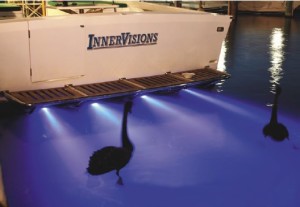
As LED technology progress these are getting brighter and brighter every year and have left the halogen etc., in their wake. Some of the many advantages offered by LED are tiny power consumption, long life and colors that travel through the water. Color makes a huge difference to the distance light travels in water; the blue end of the color spectrum will naturally penetrate furthest, followed by green, which is best in fresh water.
There are also many different styles of underwater lighting thru hull, surface mount and even trim tab mountable. Surface mount models are great for vessels that are not permanently in the water as if your light fails the boat needs to be out of the water for replacement. Trim tab mounted lights can be removed when in the water, it just means you may have to take a swim. Through hull lights should be serviceable from inside, otherwise you will have to haul out for a light repair. A costly way to replace a light bulb.
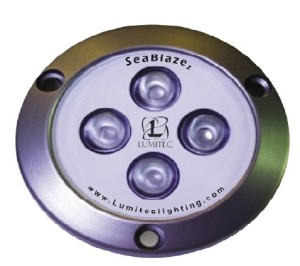
A Simple Checklist When Looking at Underwater lights is:
- Even LEDs can fail from time to time so make sure it is easily serviceable. Some products are even upgradeable as the technology gets brighter.
- The fitting needs to be corrosion proof as it is below sea water, and watch out for seals that may overheat and deteriorate.
- Check that they can run out of the water in case you leave them on when running. This includes LED but especially for Halogen and Xenon as they produce tremendous amounts of heat and can melt the seal.
- Check the warranty period some companies offer up to 3 years`, some others offer none
- Check for tested and type approved products RINA, DNV, Lloyds etc
- Light Emitting Diodes range from very low output to very high output, just because one fitting has more LEDs than another does not mean more light.
- The light output comes down to the LED itself, the optics and the way it is electrically driven, a well-designed light with one high power LED, correct optics and driven correctly can outperform a fitting with a cluster of 10 or more low power LEDs.